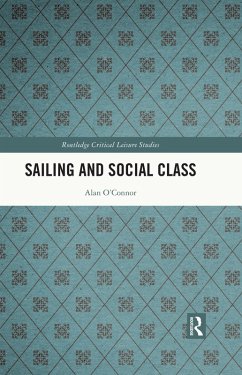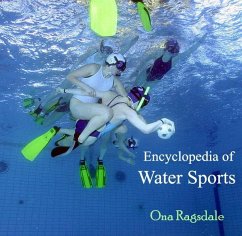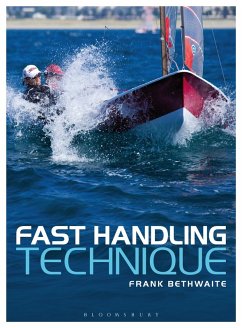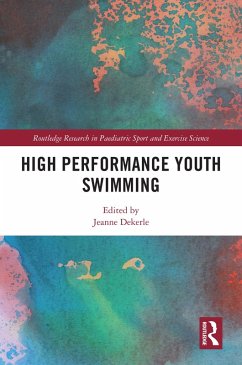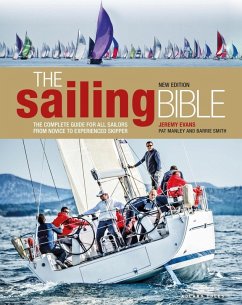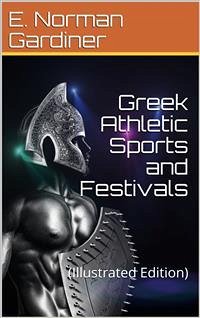
Greek Athletic Sports And Festivals (eBook, PDF)
(Illustrated Edition)

PAYBACK Punkte
0 °P sammeln!
The athletic ideal of Greece is largely due to the practical character of Greek athletics. Every Greek had to be ready to take the field at a moment’s notice in defence of hearth and home, and under the conditions of ancient warfare his life and liberty depended on his physical fitness. This is especially true of the earlier portion of Greek history, but is more or less true of the whole period with which we are concerned. Greece was never free from war—wars of faction, wars of state against state, wars against foreign invaders—and ancient warfare made no distinction between ...
The athletic ideal of Greece is largely due to the practical character of Greek athletics. Every Greek had to be ready to take the field at a moment’s notice in defence of hearth and home, and under the conditions of ancient warfare his life and liberty depended on his physical fitness. This is especially true of the earlier portion of Greek history, but is more or less true of the whole period with which we are concerned. Greece was never free from war—wars of faction, wars of state against state, wars against foreign invaders—and ancient warfare made no distinction between combatants and non-combatants. Every citizen was a soldier, physical fitness was a necessity to him, and his athletic exercises were admirably calculated to produce this fitness. Running and jumping made him active and sound of wind; throwing the diskos and the spear trained hand and eye for the use of weapons; wrestling and boxing taught him to defend himself in hand-to-hand warfare.
The practical value of these exercises explains their importance in Greek education. They constituted what the Greeks described as “gymnastic,” the term “athletics” being properly confined to competitions. Gymnastic trained the body as music trained the mind. There was no artificial separation, no antagonism between the two such as has disfigured much of our modern education. The one was the complement of the other: together they comprised the whole of Greek education. An ill-trained body was as much a sign of an ill-educated man as ignorance of letters, and the training of the body by athletic exercises distinguished the Greek from the barbarian. The training began often as early as seven, but it did not end at the age when boys leave school. The Greek did not consider his education finished at the age of sixteen or seventeen, and he continued the training of body and mind till middle age or later, daily resorting to the gymnasium for exercise and recreation.
Great importance has been attached to the evidence of contemporary monuments, and illustrations have been given of the principal monuments described. In their selection preference has been given ceteris paribus to objects in the British Museum, because these are likely to be most accessible to the majority of readers. In the case of vases the interpretation often depends on the composition, and whole scenes have as far as possible been reproduced rather than single figures. Museum references are appended to the illustrations wherever available, and also some indication of the date of the objects illustrated. Literary references will be found in the list of illustrations.
Many of the illustrations have been prepared expressly for this book, and for these I am indebted to the careful and excellent work of Mr. Emery Walker. A large number are reproduced from articles by myself and others which have appeared in the Journal of Hellenic Studies, and in expressing my thanks to the Council of the Hellenic Society for permission to reproduce them I should like to render testimony to the value of the Library of that Society to any one who, like myself, does not live in the vicinity of any great Library. But for the generous facilities which this Society affords for borrowing books, any work which I have been able to do would have been almost impossible.
The practical value of these exercises explains their importance in Greek education. They constituted what the Greeks described as “gymnastic,” the term “athletics” being properly confined to competitions. Gymnastic trained the body as music trained the mind. There was no artificial separation, no antagonism between the two such as has disfigured much of our modern education. The one was the complement of the other: together they comprised the whole of Greek education. An ill-trained body was as much a sign of an ill-educated man as ignorance of letters, and the training of the body by athletic exercises distinguished the Greek from the barbarian. The training began often as early as seven, but it did not end at the age when boys leave school. The Greek did not consider his education finished at the age of sixteen or seventeen, and he continued the training of body and mind till middle age or later, daily resorting to the gymnasium for exercise and recreation.
Great importance has been attached to the evidence of contemporary monuments, and illustrations have been given of the principal monuments described. In their selection preference has been given ceteris paribus to objects in the British Museum, because these are likely to be most accessible to the majority of readers. In the case of vases the interpretation often depends on the composition, and whole scenes have as far as possible been reproduced rather than single figures. Museum references are appended to the illustrations wherever available, and also some indication of the date of the objects illustrated. Literary references will be found in the list of illustrations.
Many of the illustrations have been prepared expressly for this book, and for these I am indebted to the careful and excellent work of Mr. Emery Walker. A large number are reproduced from articles by myself and others which have appeared in the Journal of Hellenic Studies, and in expressing my thanks to the Council of the Hellenic Society for permission to reproduce them I should like to render testimony to the value of the Library of that Society to any one who, like myself, does not live in the vicinity of any great Library. But for the generous facilities which this Society affords for borrowing books, any work which I have been able to do would have been almost impossible.



